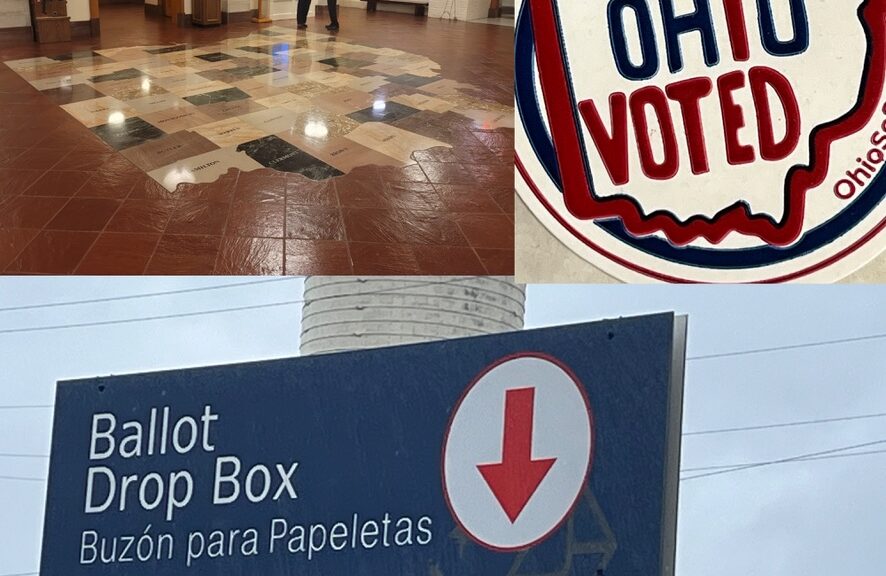
2020 Voter Fraud and Its Effect in the 2024 Election
The primary season has narrowed the presidential running race, to be a 2020 rematch between former President Donald Trump and current President Joe Biden. The 2020 Presidential election was tumultuous with some Republicans claiming election fraud in key states.
For the 2020 election Mike West, Manager of the Community Outreach Department for the Cuyahoga County Board of Elections, says Ohio did not experience a close race so its results were not contested. West says Ohio saw its election outcome because there are “checks and balances” meant to prevent rigged results. These include voting machine servers protected from being hacked and ballots with individualized stub numbers making it hard for phony ballots to be counted.
While these safeguards are preventative, one of the most contested ways to vote is with mail-in ballots and its chances for duplicate voting. Duplicate voting occurs when an individual tries to vote both by mail and physically. Statistics gathered from the Heritage Foundation include duplicate votes for ways presidential elections in Ohio have been meddled with. Other tampering methods, according to the foundation, are false registration, fraudulent use of absentee ballots, illegal “assistance”, impersonation fraud, and ineligible voting. In the past twenty years of presidential elections in Ohio, only 20 cases involved individuals being criminally charged for fraud by the state. Only one of the cases was for duplicate voting in 2020.
In a statement provided by his press secretary, Secretary of State Frank LaRose affirmed Ohio is a safe state for elections, as seen with Heritage’s numbers. LaRose further expressed his sentiments as, “It’s one person, one vote. That’s what Ohioans expect when they cast their ballot and it’s what we will continue to deliver. Voter fraud is exceedingly rare in Ohio because the word is out – if you try to vote twice, we will catch you.”
Given Ohio’s 2020 findings from LaRose, the number of reported frauds is small compared to the nationwide number at 475 for 2020 according to the Associated Press. AP found other states like Arizona and Nevada’s alleged frauds close to or in the triple digits, like 198 in Arizona. Neighboring states like Michigan, Pennsylvania, and Wisconsin report similar or smaller numbers to Ohio. Michigan’s fraud cases were found to be 56 while Pennsylvania’s was 26.
With those small fraud numbers experts in the political science and governmental world, like State Representative Sean Patrick Brennan, says that alleged nationwide cases will not keep Americans from voting. Brennan, who has studied political science at a graduate level, said, “The perception of that vote by mail is susceptible to tampering. It might cause some voters to vote physically at the polls as opposed to maybe filling in their ballot”.
Despite a hypothetical change in voting methods, Ohioans and data provided by the Statista Research Department show Americans are more motivated to vote in this year’s election compared to 2023. More older Americans in the fifty-plus age range expressed a 50% eagerness to perform their civic duty. The data reveals a potential generation gap in motivation to come out to polls. Americans in the 18-35 age group only felt more motivated to vote by 38%, the smallest percentage out of all age groupings.
Given the increase in motivation levels and a potential one in physical voting, West asserts, “We know that the presidential election is probably going to be about seventy turnout, so I don’t think any doubts or questions have been raised about voter integrity are gonna have an impact in November. People are gonna be ready to go out and vote.”